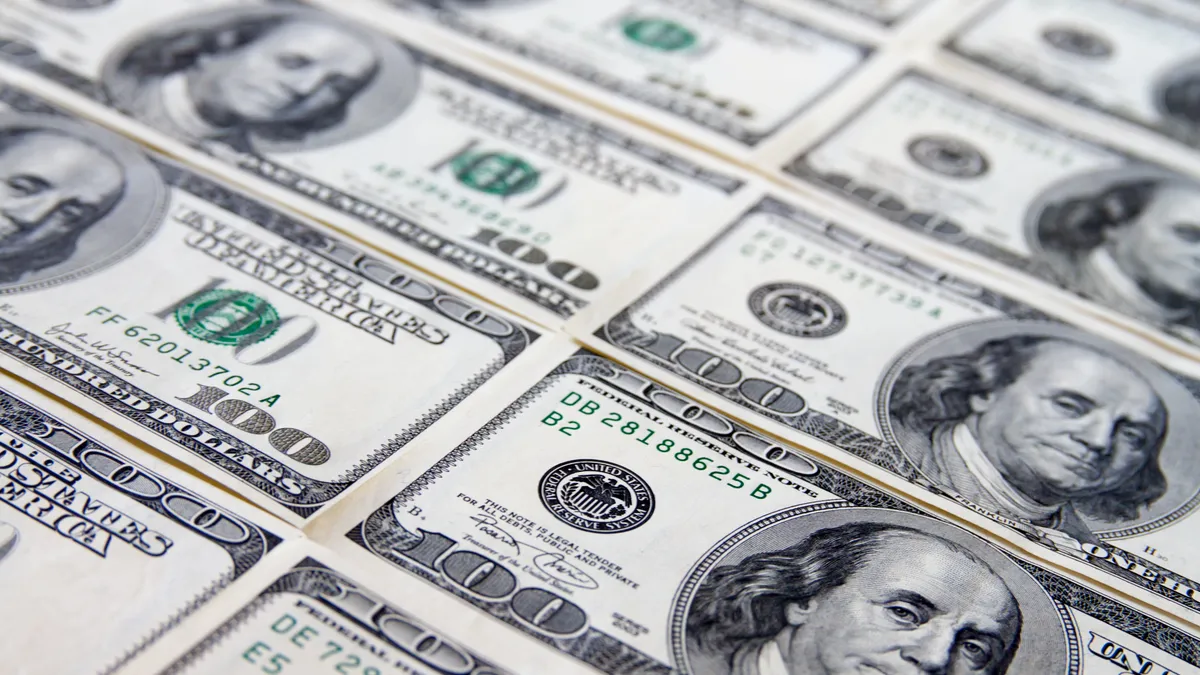Dive Brief:
- The new round of Paycheck Protection Program funding that opens to lenders today will look slightly different from last year's program.
- While still aimed at helping contractors and other businesses keep workers employed during the coronavirus pandemic, the $284 billion in new funding prioritizes community financial institutions and has special considerations for minority, underserved, veteran and women-owned businesses.
- Community financial institutions — about 10% of eligible lenders, according to the Los Angeles Times — will be able to start accepting loan applications today for entities seeking their first PPP loans. On Wednesday, those same lenders can begin processing second-round loans for small businesses and nonprofits that have used up their first loan. The lending portal will be available for other eligible lenders and borrowers shortly thereafter, the Treasury Department said.
Dive Insight:
The processing time and mode will also be slightly altered from last year’s PPP process. The applications will go through a series of automated checks before a loan number is issued, Treasury officials said. That could slow processing time by about a day, but should reduce confusion and potential fraud, they said.
The SBA said it plans to connect borrowers, through its online Lender Match tool, to "small lenders who can aid traditionally underserved communities," adding that certain hours will be dedicated to helping the "smallest PPP lenders" access the portal.
The agency also added to its PPP application an optional demographic reporting section in the hopes that lenders will encourage borrowers to fill it out and bolster "efforts to reach underserved, minority-owned, veteran-owned and women-owned businesses."
Key updates to the program include:
-
PPP borrowers can set their PPP loan’s covered period to be any length between 8 and 24 weeks to best meet their business needs.
-
PPP loans will cover additional expenses, including operations expenditures, property damage costs, supplier costs and worker protection expenditures.
-
The program’s eligibility is expanded to include 501(c)(6)s, housing cooperatives and direct marketing organizations, among other types of organizations.
-
The PPP provides greater flexibility for seasonal employees.
-
Certain existing PPP borrowers can request to modify their First Draw PPP Loan amount.
-
Certain existing PPP borrowers are now eligible to apply for a Second Draw PPP Loan.
A contractor or other business is generally eligible for a Second Draw PPP Loan if the borrower:
- Previously received a First Draw PPP Loan and will or has used the full amount only for authorized uses.
-
Has no more than 300 employees.
-
Can demonstrate at least a 25% reduction in gross receipts between comparable quarters in 2019 and 2020.
During its first iteration between April and August 2020, the PPP provided $525 billion in forgivable loans to small businesses. Making the loans exclusively available to community lenders for several days and the additional identity checks are intended to correct some of the confusion and fraud seen last year, according to the Los Angeles Times.
The program ran out of money within days as businesses rushed to claim the funds with few eligibility restrictions. Many very small businesses without close ties to a lender were shut out of the process and unable to get funding.
"While the PPP has been an incredible success, there are still many more opportunities to provide assistance to businesses who have yet to access these forgivable loans, especially as PPP re-opens for first and second draw loans," said Jovita Carranza, SBA administrator in a statement. "These are challenging times for our nation’s small business owners and entrepreneurs, but through our continued outreach and focused approach, we will continue to ensure access and opportunity for all those who need assistance."
Portions of this article first appeared on sister website Banking Dive.
















